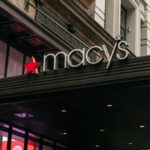Augmented reality (AR) unlocks a variety of opportunities for the retail sector. It helps to elevate the in-store buying experience, bring online shopping to a completely new level, and enhance guests’ experiences at fashion shows. Let’s see how AR is used by well-known brands and what benefits it brings to consumers’ shopping journeys.
How AR Transforms Online Shopping
The main drawback of e-commerce is the lack of physical interaction with desired items. Some brands integrate AR into their customers’ online shopping experience to bridge this online and offline retail gap. According to a recent survey, consumers’ interest in AR shopping is growing. Today, 55 percent of UK consumers identify shopping as a top reason for the use of AR. Such technology is used to find out additional information about products, increase shopping efficiency, and ask family and friends for their opinions on what to buy. Seventy-seven percent of consumers are interested in using AR to interact with a product before buying.
Reasons for the increasing interest in AR online shopping tools are quite obvious: AR has the power to build customer confidence, help shoppers make the right choice, and bring in-store product interaction to e-commerce. To give you an idea, recent research revealed that 80 percent of AR shoppers feel more confident in their online purchases. AR provides consumers with many different ways of exploring a product — from visualizing it in a real-life environment to trying it on from the comfort of their home. As a result, online shoppers get a more complete and accurate understanding of the product, leading to fewer product returns.
Furthermore, brands have noticed that the integration of AR into online shopping results in more conversions. Interacting with products via AR leads to a 94 percent higher purchase conversion rate. A great example of how a brand can enhance online shopping experiences with AR is Ikea’s mobile app. It allows users to “place” furniture from the retailer’s catalog in their home or office and examine all the details like it’s in front of them.
How AR Elevates In-Store Shopping Experiences
The identification of new means of engagement with today’s tech-savvy consumers is one of the main issues for brick-and-mortar retailers. This is where AR technology comes into play. It has the power to make in-store shopping innovative and interactive, leading to increased customer engagement and sales.
For example, Nike has launched an AR experience across its retail stores. Using their smartphones, shoppers can scan QR codes located in participating stores to unlock unique stories contained within a single virtual box. This AR container featured a frosted glass appearance, hiding a wide variety of digital artifacts. By tapping on the virtual box, visitors could unlock 3D-scanned assets taken directly from Nike’s archives. The aim of the campaign was to celebrate the brand’s 50th birthday and to “bring the brand’s past, present and future to life in stores globally through a WebAR experience.”
Despite all the benefits of AR technology, some retailers still find in-store implementation a challenge. The biggest challenges that retailers face when adopting AR include the need to invest in technology (77 percent) and find the right talent (72 percent). Luckily, there are some easy-to-use solutions that allow retailers to create AR experiences within a matter of minutes for rapid delivery to customers.
Zoom in and rotate the model to estimate the items. Click the “Cube” icon to experience the 3D View in AR.
To provide an engaging in-store shopping experience, retailers can print QR codes redirecting shoppers to AR holograms and add them to item tags. The consumer will simply need to scan a QR code with their smartphone in order to explore a whole outfit or separate items in the surrounding environment. AR targets a common pain of shopping for apparel — the inability to envision how the clothes on hangers will look in real life.
Watch the video to see an AR shopping experience.
How AR Can Benefit Guests’ Experiences at Fashion Shows
Retailers can also leverage AR technology during brand events. For instance, Apple is set to launch its much-anticipated mixed reality headset, Vision Pro. This is expected to become a game-changer for the user experience. Cappasity is going to make its AR Hologram format available for Vision Pro users, which will open many opportunities for brands looking to engage the guests of their fashion shows as never before. A brand can either hold an entirely virtual showroom using Vision Pro or provide the opportunity to examine fashion pieces in the headset after a real fashion runway. Estimating the look of fashion items in AR after the show greatly benefits guests since they can closely interact with the pieces they’ve just seen on the runway. Brands can also use AR holograms to showcase some exclusive fashion pieces for their visitors.
As you see, AR technology has a huge impact on online and in-store shopping experiences. It can also bring something new to brand events and fashion shows. Investing in AR technology today will give retailers a competitive edge in the future.
Kosta Popov is the CEO and founder of Cappasity, the company providing an easy and scalable platform for creation, embedding and analysis of 3D and AR/VR content.
View Original Article



















